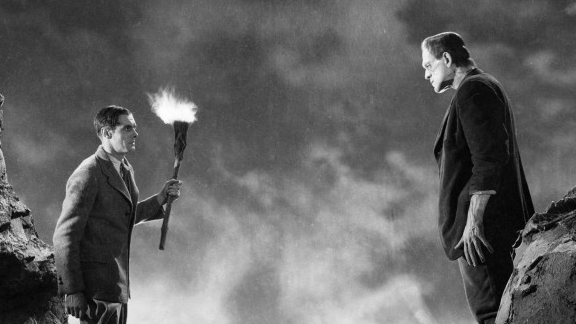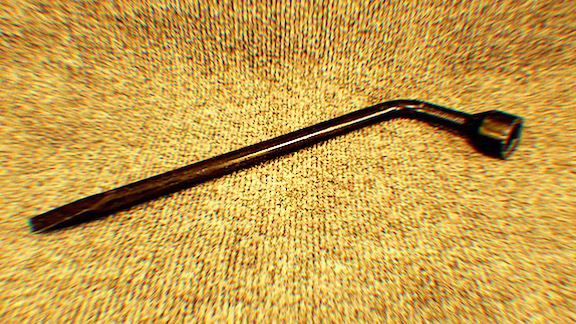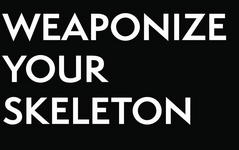Being the Better Monster
In “Building a Better Monster”, I talked about how people build up insanely powerful adversaries (bigger, faster, stronger) and place them in impossible scenarios (it was a dark and stormy night, he has night-vision goggles and a gun that shoots chainsaws) and then ask, “How do I deal with that?” My advice was, essentially, build him up and then be him. Everyone gets the building up part—we’re all experts in that even before we walk through the door to train. The question is, of course, how to best get it done?
The short answer is: Figure out why you’ve decided it’s going to work for him.
And the even shorter answer to that is: INJURY. But you already knew that.
The long answer is: When you build the better monster you’ve already decided that he’s going to do something to you that you’re worried you cannot prevent and will have a poor outcome for you.
We can pick that apart to find the salient points, the places where you have recognized (consciously or not) several truths about violence:
1) He is going to do things to you.
This has two important components—the recognition that he has intent and resides in the cause state.
2) You can’t stop what he is doing.
This is recognition that blocking is a sucker’s game, that being in the effect state is not nearly as effective as being in the cause state.
3) Injury will make you helpless.
This is the “poor outcome” you fear—you get injured, go down and get more injured in a downward spiral that can only really bottom out with death.
The real trick to make this self-defeating process worth your while is to flip it inside out—you’ve built your monster, you’ve figured out why it’s going to work for him, now all you have to do is put yourself in the position of this impossible person. Think like the predator you are and resolve yourself to making the realities of violence work for you instead of against you:
1) You are going to do things to him.
2) He can’t stop what you’ve already done.
3) Injury will make him helpless.
Now you see how the two of you are interchangeable—the driver’s seat of violence is up for grabs and belongs to the first person to buckle in and romp on the gas. The other person gets run over and leaves a star on the windshield.
Which leads us, through the clumsiest of segues, to the fact that no one is immune to violence, and what that reality does for him. And can do for you…
People seek training because what they really want is immunity from violence. It’s not the idea of doing it they find appealing, but the idea of preventing it. I know this was true for me. But then we give them an ugly, unpopular truth: Nothing can make you immune and you’re on your own. You’re either going to injure him, put him down and savage him on the ground or he’s going to do it to you. You’re not going to have superior, “no can defend” technique or superhuman abilities. It’s just going to be you and your willingness to tear another human being apart. You’re very probably going to take a beating in the process, and you can, whether through inaction, miscalculation, or just plain dumb luck end up on the receiving end of the tool of violence. No matter how hard and long you train, you can be murdered.
This is the bitterest pill to swallow. It leads to all sorts of “Well, what’s the point then?” questions. If I can end up just as dead with or without training, why bother? This disconnect is the same one that often occurs for people with firearms—they believe that somehow the gun will “protect” them, not realizing that they are going to have to shoot someone to death to make it work… and it’s even worse with knives. It’s going to be messy and noisy and scary well beyond what you can imagine. But the end result is, after a fashion, “defense” in that dead people can’t hurt you.
So why bother? Well, prior to training you were rolling dice. We show you how to play the game with loaded dice—you end up with an edge. That edge is only going to mean anything if you accept the inborn frailty of your body as you harden your mind to the task at hand: you, crippling another person for life. There is nothing you can do to make your body immune to injury; the only thing you can change is the intent in your head.
It’s going to work for him because he wants to cause injury and throws everything he has into making that idea a reality. He has intent. It’s going to work for him because he is acting on the realities of violence as they stand—he is going to use what works and get it done first because he knows no one is immune… he is acting on the fact that he can be taken. This is why he hits first, why he wades in and goes for broke. He knows if he breaks you first, he is far less likely to have any of it done to him. He knows if he waits he’s done for.
This is why you fear him. It is also the key to unlocking the power that causes that fear, the key to harnessing it and making his super-scary power your own.
Turn it inside out and wear it instead of having it wear on you.
Be what you fear.
— Chris Ranck-Buhr (from 2006)










